#love biome next detox
Text
Which Probiotic is Best for Autism? Love Biome USA Best Probiotic Supplement For Autism
Which probiotic is best for autism? At this article we learn does Love Biome USA include as solustion best probiotic supplement for autism.

Autism is a neurological condition that affects speech and behavior. According to research, gut health and the microbiome may have a role in autism development.
Probiotics may benefit gut health and alleviate autistic symptoms. However, probiotics should not be utilized as a sole treatment for autism, and additional research is needed to properly understand the association between the microbiome and autism.
Consider the following variables when selecting a probiotic supplement for autism:
Strains: It has been demonstrated that different probiotic strains have varied impacts on gut health and behavior.
2. CFU Count: The term "colony-forming units" (CFU) refers to the quantity of live bacteria in a probiotic supplement. Choose a probiotic supplement that contains at least 1 billion CFU per dose.
3. Quality Control: assure that the probiotic supplement you purchase is made in a facility that adheres to high quality control standards to assure the product's purity and efficacy.
4. Third-Party Testing: Look for a probiotic supplement that has been third-party tested to guarantee the strains and CFU count are correct.
5. Price: Probiotic supplements might vary in price, however keep in mind that the most costly product is not always the best.
While probiotics may assist support gut health and reduce autism symptoms, they should not be utilized as the only treatment for autism.
It's usually a good idea to consult with a doctor before beginning a new supplement regimen, especially for children with autism.
Best Probiotic Supplement For Autism
We have the greatest solution if you're looking for the greatest Probiotic Supplement For Autism. Love Biome USA Daily 3 System are the best probiotic supplements for good health.
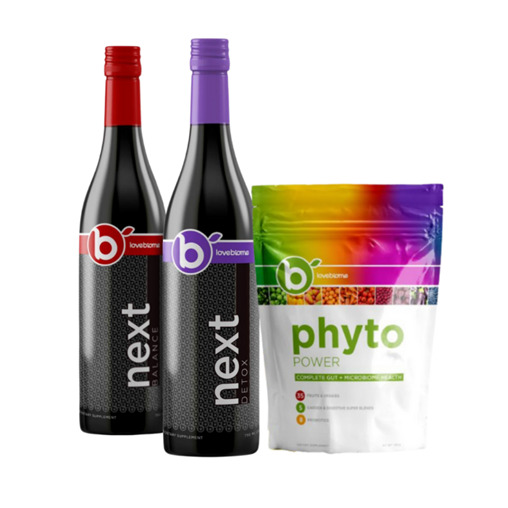
The first step toward optimal health is to take care of the microenvironment that exists within the digestive system. It's referred to as your gut microbiome. We'd like to introduce you to this system. It literally functions as the central nervous system of our bodies.
Our goal is to optimize the gut microbiome. In this biotic environment, healthy bacteria must be introduced and fed, while unhealthy bacteria must be denied food and eventually removed.
We use foods that are organic and ethically sourced. Each component and formula has received our personal approval.
Love Biome products have all of the great elements contained in them thanks to a unique collection of ingredients acquired from all over the world.
Love Biome Products are designed to be as basic and pure as possible while yet being effective. Nourish and balance the gut bacteria with Biome Juice:
Use a professionally prepared probiotic blend to introduce friendly microorganisms. This combination acts as reinforcements to assist improve the intestinal ecology.
Provide prebiotics, or beneficial bacteria diet. Prebiotics promote the growth and flourishing of beneficial bacteria in the stomach.
Assist the body's natural detoxification process, allowing it to rid itself of harmful pollutants.
PhytoPower's, one of Love Biome products, has outstanding ingredient list includes whole meals and probiotics complexes such as:
Acidophilus Lactobacillus
Lactobacillus Bulgaricus is a kind of bacteria.
Lactobacillus Rhamnosus is a kind of bacteria.
Lactobacillus Casei is a kind of bacteria.
Bifidobacterium Bifidum is a kind of Bifidobacterium.
Breve Bifidobacterium
Sporogens Lactobacillus
Plantarum Lactobacillus
And digestive enzymes such as:
Amylase
Protease
Cellulase
Lactase
Lipase
These will aid in the creation of the ideal microbiome environment in your stomach. This will aid in the maintenance of the following systems and functions: digestive system, immunological system, nutritional absorption, detoxification, energy and stamina, circulation, and skin health.
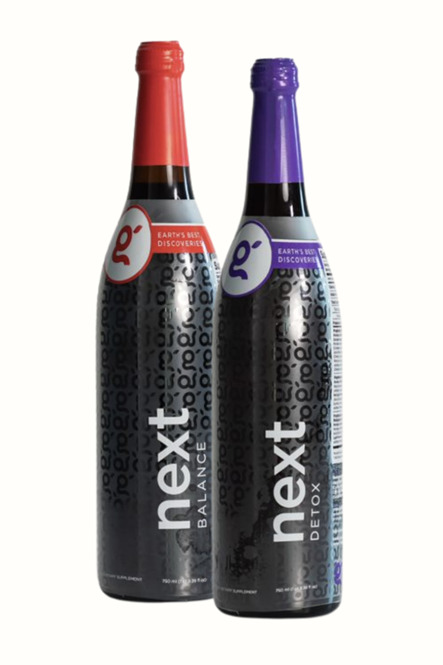
Polyphenols that included in Love Biome Next Balance and Next Detox are important for intestinal health.
Polyphenols that have not been digested are absorbed by gut flora, providing a rich source of prebiotic material.
Love Biome Next Balance is a strong blend of globally sourced botanical components high in polyphenols and phytonutrients designed to support a balanced and healthy gut microbiota.
Love Biome Next Detox uses ingredients obtained from around the world to help clear away oxidative chemicals, toxins, and waste, kicking off an overall detoxification in the skin, blood, liver, and stomach.
Love Biome USA Products Daily 3 System
Is there anything you can do every day to improve your appearance, feeling, and performance? Yes. Love Biome's straightforward and comprehensive Daily 3 System includes:
Next Detox and Next Balance are two liquid supplements. Simply pour and enjoy.
PhytoPower: A nutrient-dense powder that readily dissolves in water or in your favorite smoothie.
Begin your pet's journey to better health with Love Biome Products' Daily 3 System!
Here's Where to Find the Best Probiotic Supplement for Autism.
Purchase the Most Effective Probiotic Supplement for Autism and GET DISCOUNT Now
#Best Probiotic Supplement For Autism#Love Biome Usa#Love Biome Products#love biome#Love Biome Norway#love biome next balance#love biome next detox#love biome phyto power
0 notes
Text
Love Biome
NEXT BALANCE | NEXT DETOX | PHYTO POWER
LOVE BIOME| LOVE BIOME JUICE CREATING AN IDEAL MICROBIOME WITHIN THE GUT
Love Biome Juice Creating An Ideal Microbiome Within The Gut. Grab The Products Now And See What Our Products Can Do For You!
Your body contains trillions of bacteria, viruses, and fungi. The microbiome is the name given to all of them.
Some bacteria are linked to disease, while others are necessary for the health of your immune system, heart, weight, and a number of other body systems.
The term “microorganism” also refers to tiny living things like bacteria, viruses, fungi, and other microbes.
These microorganisms number in the trillions, and the majority of them are found in your stomach and on your skin. In fact, your body contains more bacterial cells than human cells.
Compared to the about 30 trillion human cells in your body, there are approximately 40 trillion bacterial cells. You become more bacterial and less human as a result.

0 notes
Text
The Best Natural Deodorants for Women That Actually Work!
New Post has been published on https://healingawerness.com/news/the-best-natural-deodorants-for-women-that-actually-work/
The Best Natural Deodorants for Women That Actually Work!
If you’ve been following The Healthy Maven for a little while now then you know I’ve been on a natural deodorant journey for the last year. As a self-described clean beauty addict, one of the most common questions I get is “what’s the best natural deodorant for women?” and for the longest time I couldn’t answer it.
There were some deodorants that stood out to me and others I would never use again but no matter how hard I researched, I could not find a natural deodorant review that wasn’t somehow tied to a brand or sponsored in some way. I wanted a non-biased review of natural deodorants by someone who actually uses them. So in true Maven fashion I went out to create the solution myself.
It’s been 10 months since I started out on this journey and I’m not gonna lie, I’m ready for it to be done. I’ve tried over 20 natural deodorants, using each for at least 1 week (usually more) and testing them in different scenarios from sweaty workouts to doing absolutely nothing. I’ve also learned an EXCEPTIONAL amount of information about my armpits – something I never thought I would deep dive into. And of course, my spreadsheet loving brain has tracked all of this info along the way. But the time has come for me to share some of my favorites and some that I would never reach for ever again.
I tried my best to be as comprehensive as possible but I’m certain some of you will not find your favorites on this list. I excluded certain products because while they were advertised as “non-toxic”, they weren’t exactly using the cleanest ingredients OR the product was somewhat obscure and difficult to find and/or ship worldwide. Nevertheless, this list still includes over 20 options so cut yo’ girl some slack – and please take a moment to thank my armpits who have been put through this ringer this past year…you’re welcome.
WHY USE NATURAL DEODORANT?
Because all the cool kids are doing it…duh. Okay clearly not a good enough reason but I’ll do my best to make a solid argument for why you should use natural deodorant.
1. The ingredients
Have you seen what is in conventional deodorant? Likely you’ve glanced at the bottom at least once in your life and seen a list of ingredients that appear to be written in a different language. But did you know that many of these ingredients can be incredibly harmful and toxic for your body? Let’s go through a couple of them:
–aluminum: this is the ingredient that clogs your pores and prevents sweating (more on this below). Aluminum exposure has been linked to Alzheimers as well as to build-up of estrogen in the body which can also be correlated with increased chances of breast and prostate cancer.
–parabens: these ingredients are used as a preservative in deodorants but can also mimic estrogen in your body. This leads to hormonal disruptions and is also linked to breast and prostate cancers.
–phthalates: these chemicals are used to make other ingredients more flexible and are also used as fragrance ingredients. They primarily affect the endocrine system and exposure can lead to early onset puberty as well as breast cancer later in life.
-Triclosan: An antibacterial chemical that can also disrupt the hormone system and is associated with increased chance of breast cancer. It was actually banned by the FDA in hand soaps but for some reason they still allow it in deodorants?!
…this list could go on but this is just a taste of what you find in conventional deodorants.
2. The location
Your armpits are in a very vulnerable location. They are the access points to the lymphatic system, which protects you from invaders like bacteria, toxins, viruses, fungi, and from cancerous cells. The lymph nodes are the checkpoints, which inspect and fight everything that does not belong in a healthy body, removing it to keep you protected.
If there are toxins accumulating in the lymph nodes, the lymph system will get clogged and will have a hard time cleaning out harmful invaders. You can imagine that your lymphatic system will not be doing its job when it’s constantly having the above ingredients applied directly to this area.
DOES NATURAL DEODORANT ACTUALLY WORK?
Yes and no. Can it help prevent you from smelling from your underarms? Yes. Will it prevent sweating and keep you smelling fresh as a rose for 24 hours? No.
The biggest issue with natural deodorants is our expectation that they perform like conventional ones. Natural deodorants are NOT antiperspirants. However, nothing should be an antiperspirant. We are supposed to sweat and despite what we may believe, it’s not actually sweat that smells. Sweat is the number one way our body detoxes toxins from our body. Whether they are toxins we’ve consumed (looking at you alcohol…) or toxic build-up from our environment, the most effective way to remove it is by sweating it out. Sweat also helps us to regulate our temperature – there is a reason we sweat more on hot days and after a workout. Switching to natural deodorant first requires you to accept the fact that sweating is good and is something to embrace.
So why do we smell? Body odor is actually due to the bacteria that builds up in moist environments in your body. Certain types of “bad” bacteria eat up the proteins in sweat and as a by-product cause odor. The reason you don’t smell with conventional antiperspirants is two-fold: they prevent your body from sweating and they use aluminium salts to kill the bacteria – good and bad. Like any good biome you need to balance your good bacteria so that all your sweat isn’t being eaten up by “bad” bacteria. I’m simplifying this but hopefully this makes sense to you.
Now if you’re going SUPER natural you would dedicate yourself fully to balancing this bacteria and deodorant wouldn’t be necessary. There are certain products on the market like Mother Dirt’s AO+ Biome mist that work to do this but it also requires you to stop using soaps or any hygiene products all-together and I’m simply not up for that. If you are – more power to you! If not, the natural deodorants that are available can help to prevent build-up of bad bacteria through more natural ingredients like baking soda, magnesium and even cow tallow. Most importantly, they aren’t preventing you from sweating out toxins and in turn wiping your body daily with toxic chemicals.
This is my long way of saying that yes they do work to *somewhat* balance the mechanism that causes body odor AND in the meantime they use natural scents from essential oils or cover up B.O. Will this cover-up last for 24 hours? No way. Get used to the possibility that after a sweaty workout or a hot summer day you will likely need to re-apply. I’ll take that over aluminum any day.
THE BEST NATURAL DEODORANT FOR WOMEN
For your convenience, I narrowed down the 20+ deodorants I tried to what I believe to be the 6 best options on the market. This is based on efficacy, ingredients, convenience and preference of application. The rest I’ve captured in a video shared below.
Primally Pure (various scents) $14-16
In terms of efficacy this deodorant was by far my favorite discovery from my deodorant experiment. Something that stood out about Primally Pure is that it uses beef tallow as its primary ingredient. It turns out Beef Tallow is actually a natural cleansing and moisturizing ingredient for your body . This deodorant was long-lasting and definitely helps to prevent odor. I will caution you and say that it does easily stain clothes so be cautious putting on those black t-shirts and know that you may need to do some bleaching with those white ones. Also this option clearly isn’t vegan if that is your preference. My favorite scents: Blue Tansy + Charcoal.
Piperwai Activated Charcoal Deodorant $12
I’d heard great things about this deodorant and I’m glad I finally tried it out. The activated charcoal both absorbs sweat and eliminates body odor. There’s also magnesium which is moisturizing an anti-inflammatory for your underarms. This is an especially good option for anyone who is vegan or doesn’t want to use cow tallow in their underarms (which Primally Pure does contain). Next time I would order the stick (sorry I know it’s not the most sustainable) though. You will need to reapply this one on extra sweaty or hot days, however for those days you don’t have a whole lot going on this will do the trick.
AER Vapour Deodorant (Lavender Myrrh scent) $24
My go-to deodorant for a very long time. This one feels the most like a conventional deodorant to me and while it goes on wet it does dry matte. I love the scent and its the only deodorant with baking soda that does not require me to do a whole series of care to prevent a rash (see below). However, it’s expensive as hell ($24 dollars) and now that I’ve found others I like I’m not sure I’d repurchase.
Native Deodorant (various scents) $12
If you do not have sensitive armpits and want an easy transition from conventional to natural deodorant, Native is your jam. I personally did not love the scents (even though there are tons of options) and found I reacted to the baking soda versions. However I know many people (C included) who have found great results with Native and if you sign-up for their subscription service you can definitely save money. Note: some of their scents are cleaner than others so check the ingredients on the one you order!
Saje Wellness Deodorant (Exotic Scent) $13
I’m including this one not because I use it frequently but because I think there’s probably a rare few of you out there who prefer spray deodorant. To be honest, this is the deodorant I keep in my bag for emergencies because application is so easy. They do recommend you use their crystal stick in conjunction with this spray but one step is already too much for me so I’m definitely not doing both.
Meow Meow Tweet Baking Soda Free Deodorant (Lavender Scent) $14
I thought I would include one baking soda-free option. If you watch my video you will see I included many BS-Free options however almost none of them work and many actually made me smell worse (perhaps feeding the bacteria in some way?). Meow Meow Tweet was the only BS-Free Deodorant that was *somewhat* effective. So if you’re super sensitive to baking soda, even after implementing some of my tips below, this could be a good option for you.
To see a full recap of all the natural deodorants I tried watch the video I filmed.
HOW TO TAKE BETTER CARE OF YOUR UNDERARMS
Up until beginning this experiment I thought underarm care involved wiping them with some soap and applying deodorant. I definitely did not realize that there are ways that you can take better care of your underarms. Turns out there’s plenty you can do to help your body to detox (which happens through sweat) through your armpits. Now I’m not going to tell you that you have to start masking your underarms but there are certainly some things you can do to help prevent getting super smelly and/or take care of irritations and rashes.
If you’re anything like me, you have SUPER sensitive underarms. There are some people who can use just about any deodorant and be totally fine but I’m not one of those people. Pretty much anything with baking soda will give me a rash IF I don’t follow certain practices to take care of them. So here are my best tips to take better care of your underarms:
1. DO NOT apply deodorant after shaving – this is pretty much a guaranteed rash for anyone with sensitive underarms. If you shave your pits (if not more power to you!) be sure to do it at night and then let your underarms rest overnight before applying deodorant the next morning. Sometimes you can get away with applying a few hours later but I usually react.
2. Exfoliate – I find using a gentle exfoliant or loofa on my underarms to help remove dead skin cells really helps to prevent a rash or irritation. I’ve tested physical vs. chemical exfoliants and found a gentle loofa to be the best for my sensitive skin. I do this in the shower before I shave.
3.Warm up your deodorant – sometimes your deodorant may harden due to temperature. If so, the friction can cause irritation to your underarms. One kick way to heat it up is to place it inside your underarms (if using a stick) or mix a small amount between your fingers (in a jar) and then apply.
4. Reset the environment – My girl Jasmina from Mother Dirt is the queen of all things deodorant and while it would be goals to not use deodorant like she does, I’m not quite there yet. What she has taught me is that sometimes the microbiome of your armpit needs a little resetting. She suggested thyme oil however I’ve found I really like this spray from Primally Pure. Just don’t use right after shaving as it may burn a little bit. I highly recommend this spray for anyone transitioning to natural deodorant from conventional.
5. Give yourself time – every body is different but one thing I’ve learned is that if you’ve been using conventional deodorant for years and suddenly switch to natural your body very well may freak out. Start small by switching every other day, every 3 days etc…and let your body acclimate.
6. Take care of your gut – I can’t say I’ve noticed this to be the case anecdotally, however there is evidence to suggest that taking care of your gut through probiotics and probiotics foods can help balance your microbiome internally leading to less smells coming from your underarm. I take a daily probiotic and while I generally don’t smell bad I’m not sure I could isolate how much of this is attributed to my gut health.
If you’re feeling very extra, feel free to mix some apple cider vinegar with bentonite clay and apply that to your underarms for 5 minutes. This is easiest done in the shower. However I’ll be honest I rarely make time to do this.
…and just like that I’ve written the longest post ever all about my armpits. In case you’re wondering which one/ones I’ll continue to use, I’m generally sticking with Piperwai, Primally Pure and AER Vapour (until it runs out). I’ve found these three to be the most effective, best smelling and generally my favorites of the 20+ deodorants I tried. Of course, this is my experience and everyone has a different microbiome, lifestyle and scent preference so your choices may look different. However I do think if you’re looking to make the switch any of the ones listed above are a great start.
Definitely keep me posted if you’re switching to natural deodorant or if you have a favorite that isn’t listed or included in the video. Would love to hear why you love it/use it.
Happy Sweating!
JOIN THE THM NEWSLETTER
Join 10,000+ members of the THM Community to get access to exclusive recipes, healthy lifestyle tips and behind-the-scenes news from our team!
Source: http://feedproxy.google.com/~r/TheHealthyMaven/~3/gadJ9LrSIG0/
0 notes
Text
9 Warning Signs and Symptoms of Leaky Gut
Hippocrates was ahead of his time, saying “All disease begins in the gut.”
“Leaky gut” is a condition in which the lining of the intestines becomes damaged, allowing toxins, bacteria and undigested food particles to “leak” into the bloodstream. You may be surprised to know that many clinicians estimate that it affects 80–90% of people.
Leaky gut is a root cause of many diseases today, meaning that treatment for conditions like autoimmune disorders, IBS, psoriasis, depression, and many more will not work unless the underlying leaky gut issues are cleared first.
Defining Leaky Gut
The medical term for leaky gut is “increased intestinal permeability.”
Amazingly, our intestinal lining covers more than 4,000 square feet–about the area of an NBA basketball court!
When the gut becomes permeable, these unwanted toxins enter the bloodstream, causing widespread inflammation and triggering a response in the immune system.
The intestines is where food is broken down and nutrients are absorbed. They also act as a protective barrier—allowing very small substances through, while keeping harmful particles out of your bloodstream, such as bacteria, viruses, undigested food particles, and toxins.
When the gut becomes permeable, these unwanted toxins enter the bloodstream, causing widespread inflammation and triggering a response in the immune system.
Unfortunately, mainstream medical doctors do not always recognize this syndrome or know how to treat it. Instead of receiving treatment for the cause of your symptoms (which may include diarrhea, constipation, headaches, brain fog and fatigue), you end up receiving treatment that addresses the symptoms themselves.
This misguided protocol leads to “chasing symptoms”—one leading to the next until a catastrophic disease takes hold, or until you find a practitioner that is willing to dig down to the cause and treat the disease.
Let’s take a look at the many “diseases” where the root cause may be a leaky gut. You may be one of the many misdiagnosed individuals with this ailment.1
What are leaky gut symptoms?
The primary symptoms of leaky gut are:
1. Food allergies or food sensitivities. Yeast and other toxins spilling into your bloodstream trigger an allergic response, making allergies the number one symptom associated with a leaky gut. Studies have shown a direct correlation between children with food allergies and increased intestinal permeability.2
Some of the most common food allergies or sensitivities associated with leaky gut include dairy, wheat, eggs, soy, corn and nightshade vegetables. Eating foods containing these items may cause abdominal pain, bloating, diarrhea, constipation, swelling, migraines, or even allergy-triggered asthma.
In order to support your intestines as they heal, it’s best to steer clear of those foods that your body reacts to as foreign invaders. Sometimes healthy foods like nuts, tomatoes, or beans can be problematic for someone with a diseased gut, but with a period of a restricted diet and good treatment, they can eventually return to eating those foods.
You can find out what those foods are by going on an elimination diet, like the one built into our 26-day Detox.
As you add food groups back in, one by one, you’ll be able to identify which ones you’re sensitive to.
2. Autoimmune disorders, fibromyalgia, chronic fatigue syndrome, or lupus. More than 70 percent of your immune system’s cells are located in your GI lining.3
A healthy gut lining keeps bad guys like microorganisms and toxins within the intestine, where the immune system can kill or disarm them. As permeability in this lining increases, the “baddies” can seep out into the body, triggering antibodies and eventually leading to an autoimmune response.4
3. Poor digestion, bloating, gas, constipation, loose stools, heartburn, and nutrient malabsorption. These symptoms are signs that the lining of the intestine is inflamed, and unable to break down food to the point that nutrients can be absorbed.
Researchers at Functional Medicine University estimate that “leaky gut” accounts for at least 50 percent of chronic bowel complaints.5
4. Inflammatory Bowel Disease (IBD), including Irritable Bowel Syndrome (IBS), Crohn’s, or colitis. These painful diseases inflame the intestinal tract, and are often associated with both diarrhea and constipation.
New studies on patients suffering with ulcerative colitis and IBS show that their colons are significantly more permeable (“leaky”) than normal.6
5. Thyroid issues such as hypothyroidism, Hashimoto’s thyroiditis, or Graves’ disease. Studies show a strong correlation between leaky gut and the development of Hashimoto’s thyroiditis—a condition in which the immune system attacks the thyroid.7
Graves’ disease, another autoimmune disease, is the most common cause of hyperthyroidism and is associated with both gluten sensitivity and leaky gut.8
The common link between Hashimoto’s thyroiditis and Grave’s disease is that they affect the thyroid, usually involve an environmental trigger, and are associated with leaky gut. Graves, however, leads to an overactive thyroid gland while Hashimoto’s is associated with hypothyroidism.
6. Adrenal fatigue and slow metabolism. Stress causes your adrenal glands to release cortisol–a hormone that reduces inflammation, raises your blood sugar level, increases your awareness, and prepares you for fight-or-flight.
It’s a wonderful system when a tiger is chasing you and you have to think and act fast. However, if faced with chronic stress, the adrenals eventually grow weary…and so do you.
Stress also causes the brain to release a chemical called corticotropin releasing factor, or CRF. This chemical causes inflammation in the gut and increased permeability.
A vicious cycle ensues, with stress causing leaky gut, and leaky gut creating stress within the body.
7. Mood disorders, including anxiety, depression, and autism. Scientific American quoted several studies that concluded that leaky gut may allow substances to pass from the intestine to the bloodstream that harm the brain.
Among the findings: 35 percent of depressed participants showed signs of leaky gut,9 and as many as 9 out of 10 individuals with autism–primarily a disorder of the brain–suffer from leaky gut.
Interestingly, mice that demonstrated autism-like symptoms, who were treated with beneficial bacteria, showed changes such as less anxious behavior and increasing communication levels.10
8. Chronic pain in joints and muscles, including arthritis and headaches. When the contents of your intestines, such as particles of food and bacteria, leak into your gut, the immune system is activated to combat the invaders.
Inflammatory chemicals then travel throughout your body, causing widespread inflammation that results in pain in both the muscles and joints. Researchers have also linked this type of inflammation to migraines.11
9. Skin problems, including eczema, psoriasis, rosacea, acne, and age spots. Skin rashes, too, are a sign that your body, overloaded with toxins leaked from the gut, is trying to dump them out through the skin.
No amount of skin cream or rash ointment is going to fix a symptom that originates from the gut! These skin problems must be treated from the inside, by healing the source of the issue.
The gut-brain connection: having a healthy gut is intrinsically tied to having a healthy, alert brain.
10. Brain fog. Many people suffer from brain fog without even knowing it. The symptoms sneak up on them, and the low energy, forgetfulness, apathy, mood swings, confusion, and restless nights become the “new normal.” They may chalk it up to hormones, aging, or busy-ness.
But having a healthy gut is intrinsically tied to having a healthy, alert brain. For example, almost 95 percent of serotonin–the “happy” chemical–is created in the gut–one example of why the gut is now being called the “second brain.”
The same gut processes are also responsible for huge percentages of tryptophan and melatonin, neurotransmitters that regulate the sleep/wake cycle, oxytocin (the “love” hormone), and hormones regulating appetite and metabolism.
A leaky, inflamed gut biome can’t produce these essential chemicals, resulting in brain fog (and worse).
How do you develop leaky gut?
Intestinal permeability is regulated by zonulin, a protein only discovered recently, in 2000. This protein monitors the tight junctions that allow very small molecules to enter the bloodstream, while keeping the larger ones locked within the intestine.
When too much zonulin is present, these junctions loosen, and leaky gut ensues.12
But what creates too much zonulin? The research is new and ongoing, but one definitive cause is gliadin, a protein found in gluten from wheat and other cereal grains. (There are many gluten proteins, and gliadin is just one of them.)
Other known causes that trigger zonulin include the overgrowth of candida albicans, a yeast that normally lives in the intestines, and parasitic infections.
Making the Leaky Gut Diagnosis
There is a test you can take that will help determine if you have leaky gut. Called the “Intestinal Permeability Test,” it measures the ability of two sugar molecules to go through the digestive lining—mannitol and lactulose.
If you’d rather steer clear of labs and medical prescriptions, you can change your diet to see if your symptoms improve, beginning with a science-based, effective detox program that includes an elimination phase to check for food triggers.
I also believe that after correcting your gut issues, a bi-annual detox is one of the best ways you can prevent re-occurrence.
How to Heal A Leaky Gut
The good news is: You can heal your gut by changing your diet, reducing stress and balancing your intestinal bacteria.
Eliminate the foods you know you’re sensitive to, plus a few more that are common triggers: sugar, processed food, and food containing soy, gluten, dairy, or any GMO ingredients.
Make organic greens, veggies, and fruit your main fare. Get as many different colors in your daily diet as possible, to get a wide range of bioflavonoids, polyphenols, and fiber.
Eat healthy, anti-inflammatory omega-3 fats like organic coconut oil, olive oil, and sprouted flax.
Take a high-quality, broad-spectrum probiotic with at least 15 strains, a good prebiotic, and digestive enzymes.
Add bone broth to your diet, for its naturally healing collagen and proteins.
Use cleansing herbs like grape seed extract and black walnut to clear out bad bacteria and yeast, and strong natural anti-inflammatories like curcumin (the active ingredient in turmeric).
Remember, too, that stress plays a fundamental role in the development of leaky gut. While your improving your diet, make time in your schedule for caring for yourself.
Take time to do the things you really love and find relaxing. If you haven’t tried healing activities such as yoga, meditation, and walking in nature—now may be the time to experiment. Find something that brings you joy and make it a point to spend even a little bit of time doing it every day.
And, of course, don’t forget to drink your daily green smoothie!
–Robyn Openshaw, MSW, is the bestselling author of The Green Smoothies Diet, 12 Steps to Whole Foods, and 2017’s #1 Amazon Bestseller and USA Today Bestseller, Vibe.
Learn more about how to make the journey painless, from the nutrient-scarce Standard American Diet, to a whole-foods diet, in her free video masterclass 12 Steps to Whole Foods.
Resources
Arrieta, M.C. et al. Alternation in Intestinal Permeability. Gut. 10/2006. https://www.ncbi.nlm.nih.gov/pmc/articles/PMC1856434/
Javinen, KM et al. Intestinal permeability in children with food allergy on specific elimination diets. Pediatric Allergy Immunology. 09/2013. https://www.ncbi.nlm.nih.gov/pubmed/23909601
Vighi, G. Allergy and the Gastrointestinal System. Clinical & Experimental Immunology. 09/2008. https://www.ncbi.nlm.nih.gov/pmc/articles/PMC2515351/
Qinghui, Mu. Leaky Gut as a Danger Signal for Autoimmune Diseases. Frontiers in Immunology. 05/2017. https://www.ncbi.nlm.nih.gov/pmc/articles/PMC5440529/ (#4)
Grisanti, Ronald D.C. Leaky Gut: Can This Be Destroying Your Health? Functional Medicine University. https://www.functionalmedicineuniversity.com/public/Leaky-Gut.cfm
Gecse, K. Leaky Gut in Patients with Diarrhea-Predominant Irritable Bowel Syndrome and Inactive Ulcerative Colitis. Digestion. 2012. https://www.karger.com/Article/Abstract/333083
Kouki, Mori. Does the Gut Microbiota Trigger Hashimoto’s Thyroiditis? Discovery Medicine. 11/2012. http://www.discoverymedicine.com/Kouki-Mori/2012/11/27/does-the-gut-microbiota-trigger-hashimotos-thyroiditis/
Myers, Amy M.D. The Gluten, Gut and Thyroid Connection. Amy Myers MD. https://www.amymyersmd.com/2015/07/the-gluten-gut-and-thyroid-connection/
Rodriguez, Tori. Gut Bacteria May Exacerbate Depression. Scientific American. 11/2013.
Moyer, Melinda. Gut Bacteria May Play a Role in Autism. Scientific American. 09/2014. https://www.scientificamerican.com/article/gut-bacteria-may-play-a-role-in-autism/
van Hemert, Saskia et al. Migraine Associated with Gastrointestinal Disorders: Review of the Literature and Clinical Implications. Frontiers in Neurology. 11/2014. https://www.ncbi.nlm.nih.gov/pmc/articles/PMC4240046/ (#11
Van der Walle, Christopher et al. Modulation of the Intestinal Tight Junctions Using Bacterial Enterotoxins. Science Direct. 2011. https://www.sciencedirect.com/topics/medicine-and-dentistry/zonulin
RadhaKrishna, Rao. Role of Glutamine in Protection of Intestinal Epithelial Tight Junctions. Journal of Epithelial Biological Pharmacology. 01/2012. https://www.ncbi.nlm.nih.gov/pmc/articles/PMC4369670/
Sturniolo, G. C., Di Leo, V., Ferronato, A., D’Odorico, A., & D’Inca, R. (2001). Zinc supplementation tightens “leaky gut” in Crohn’s disease. Inflamm Bowel Dis, 7(2), 94-98.
Rapin, Jean Robert. Possible Links between Intestinal Permeability and Food Processing. Clinics. 06/2010. https://www.ncbi.nlm.nih.gov/pmc/articles/PMC2898551/
[Read More ...]
https://greensmoothiegirl.com/wp-content/uploads/2018/08/shutterstock_390898894-300x300.jpg
https://greensmoothiegirl.com/warning-signs-leaky-gut/
0 notes
Text
Human Gut Microbiome Is Your Body's Center Of Good Health
Human Gut Microbiome Is Your Body's Center Of Good Health https://golove-life.com/ Improving the health and condition of your gut microbiome is the most important thing you can do for your overall health.
Did you know that your body contains more microbes than human cells? Do you know why these microbes or bacteria are present in your body? These neighbors are always with us, and they typically do not make us ill. Are they friendly? Can they also make us sick? How did they enter? What part do they play in the body?

The human body is home to millions of tiny living creatures, and the entire population of these organisms is referred to as the human microbiome. Bacteria are a type of microbe that can be found almost anywhere on the body, including the skin, the nose, the mouth, and especially the gut.
It was previously believed that the human microbiome began to colonize the gut at birth, but some researchers have suggested that commensal bacteria may be passed from mother to baby across the placental barrier. The earliest bacteria to colonize babies may have originated from the mother's mouth microbiome.
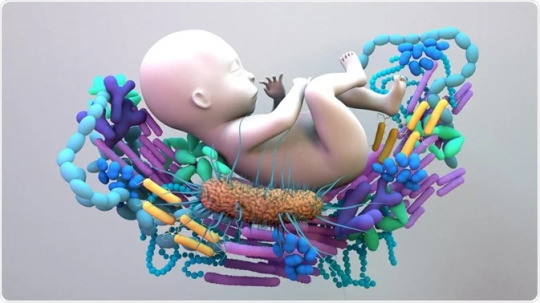
Early-life delivery modality has a significant impact on the gut flora. An infant born vaginally is initially colonized by the mother's vaginal and gut microbiota. In contrast, the skin and hospital environment bacteria are first introduced to the baby during a Caesarean procedure. Rectal mother-to-child bacterial transmission is also suggested by recent studies.
As a result, the infant born via vaginal delivery obtains bacteria similar to its own mother's vaginal and fecal microbiota during the early stages of life, demonstrating a low level of variety and primarily reliant on the baby's food.
After that, the infant's microbiota's makeup is significantly influenced by the way of feeding—breast milk versus formula. In addition to live bacteria, human milk also contains a wide variety of complex carbohydrates (known as human milk oligosaccharides) that are indigestible to infants.
These complex carbs then function as prebiotics by altering the bacterial population in the infant's stomach. While Lactobacillus and Bifidobacterium predominate in the gut microbiota of breastfed newborns, formula-fed infants acquire a microbiota more akin to that of an adult, with higher overall bacterial diversity.
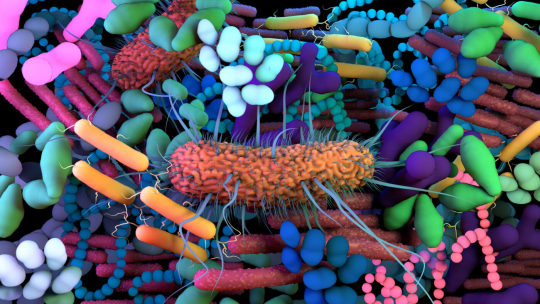
The diversity of gut microbiome increases as a child transitions from breastfeeding to solid foods rich in protein and fiber. Scientists believe that a child's gut microbiome will resemble an adult's by the time they are between the ages of 2 and 3 and will remain constant throughout their adult life.

Why Is The Human Gut Microbiome Important?
The roles of the human gut microbiome are numerous:
Protects:
It protects against dangerous bacteria.
It teaches the immune system to distinguish between friends and enemies
It breaks down harmful substances.
Nutrition:
It can digest substances that humans cannot (for example, dietary fiber).
When the gut microbiome digests dietary fiber, it generates essential compounds (such as short-chain fatty acids) that have benefits that extend beyond the gut.
It aids in the absorption of dietary minerals (e.g., magnesium, calcium and iron).
It produces various important vitamins (for example, vitamin K and folate (B9)) and amino acids (i.e., the building blocks of proteins).
Behavior:
It has the ability to influence mood and behavior.
Given its importance, scientists increasingly regard the human gut microbiome as a "organ."
According to the findings of studies on the interaction between microbial communities and their respective hosts, these organisms may carry out biochemical activities that have an effect on carcinogenesis, the formation of tumors, and the immune system's response to treatment.
According to a well-researched model on the factors that may contribute to dysbiosis in the gut, continuous intra-abdominal infections, antimicrobial drugs, or both may lead to an increased risk of colorectal cancer.
The human gut microbiome changes during the course of a person's life, from infancy to old age. While the gut microbiome is very varied in neonates, it tends to become less diverse as people age and lose essential genes, including those that are involved in making short-chain fatty acids. Frailty has been linked to the general decline in gut microbial diversity.

The good news is that lifestyle choices can help prevent some of these age-related changes in the gut flora. This means that the greatest way to enjoy good health and wellbeing is to take care of your gut bacteria with a nutritious diet and active lifestyle.
Both prebiotics and probiotics may support the health of the microbial flora in your stomach.
Your microbiome can choose to use prebiotics that are naturally present in some foods (including chicory root, vegetables, and whole grains) and food supplements, which can have positive health effects.
Although you are unable to digest fibre and prebiotics, certain advantageous microorganisms can. Human gut microbiome can use some fibers, although this is not a prerequisite for fiber.
Prebiotics, on the other hand, are used only sometimes by local microorganisms. Live bacteria known as probiotics can help the host's health when given in adequate doses.
Certain fermented foods, like yogurt, can provide living beneficial bacteria and a variety of significant substances created during fermentation to your gut microbiota, ensuring its balance, integrity, and diversity.
#Human Gut Microbiome#Gut Microbiome#Microbiome Bacteria#Microbiome Benefits#Human Microbiome#Gut Microbiome Food#Microbiome Health#Microbiome Facts#Importance Of Gut Microbiome#Immune System And Gut Microbiome#Best Foods For Gut Microbiome#love biome#microbiome#gut microbiota#next detox#phytopower#next balance#gut health
0 notes
Text
Love Biome PhytoPower Create The Perfect Gut Microbiome
Love Biome PhytoPower will help support healthy systems and functions in your body. Start Your Better Health! Love Biome USA
Comprehensive gut microbiome health requires attention to every part of the equation, your body needs a steady diet of colorful phytonutrients quality probiotics nutritious prebiotics and tactical digestive enzymes.
In other words your body needs Phytopower is a mind-blowing combination of probiotics prebiotics whole foods and digestive enzymes all blended together to create the perfect gut microbiome supplement.
Love Biome PhytoPower formula is the linchpin to the Love Biome daily 3 system it begins with 40 phytonutrient dense fruits and vegetables chosen to represent the distinct color groups of nature blue, purple, red, orange, yellow and green.
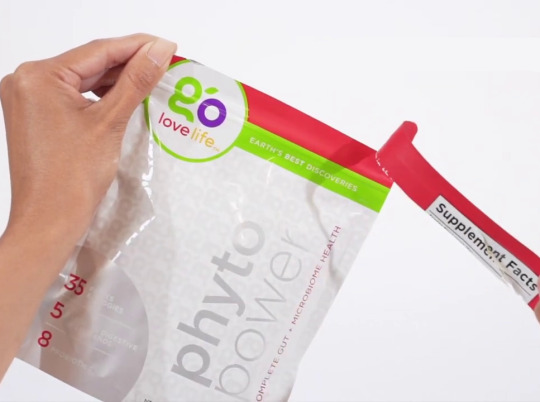
Each of these colors possess unique phytonutrients impacting microbiome diversity balance and health to that phytopower adds a distinct probiotic blend a powerful prebiotic blend and a full range of digestive enzymes.
There is no other product in the world comparable to phytopower and as key part of the Love Biome daily 3 system, Phytopower was made for the microbiome.
Every time you take Phytopower you’re fortifying your gut with good bacteria while simultaneously feeding that bacteria with healthy whole food prebiotics.
At the time phytopower is helping you you strengthen your gut’s digestive health with a proprietary blend of digestive enzymes and it’s feeding your cells with nutrients that come from fruits and vegetables of every color.
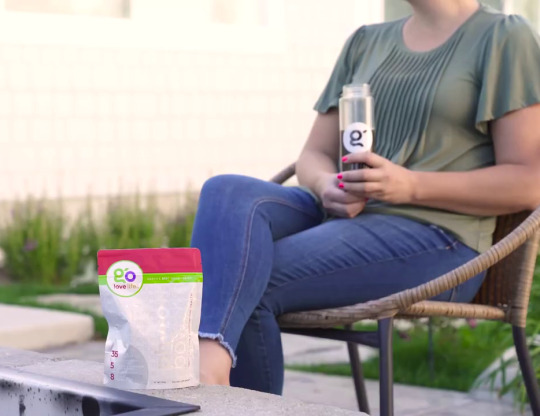
PhytoPower’s ingredients come from the garden, and were harvested and collected sustainably and naturally—no GMOs, herbicides or pesticides, and no artificial flavors, sweeteners, preservatives or colors.
PhytoPower is a low-sugar product, with ZERO gluten, dairy, corn, egg or peanuts. Also, no animal byproducts, lactose, sucrose or dextrose.
PhytoPower contains no added sugars. It’s perfect for all lifestyles: vegetarian, vegan, paleo, keto and more.

Yeah there’s a lot happening with every drink of Love Biome Phytopower and all of it is good mix Phytopower with water blend in a soothie or stir it into your favorite dish or beverage.
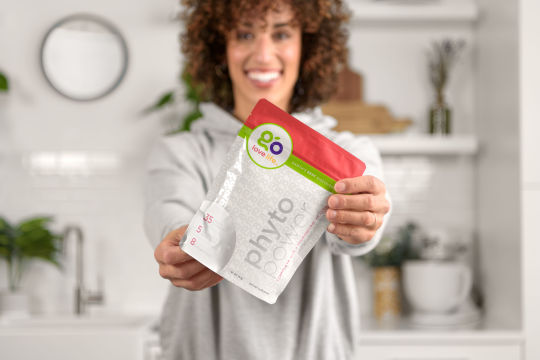
When taken daily with Next Balance, Next Detox, Love Biome Phytopower will help your gut microbiome get stronger and healthier.
The gut microbiome is directly related to brain health heart health kindey lung and liver health muscle function energy immunity and more.
#best foods for gut microbiome#gut microbiome#next balance#gut microbiota#microbiome#best microbiome supplements#brain microbiome#depression and gut microbiome#diet and gut microbiome#difference between microbiome and microbiota#eczema and gut microbiome#love biome#love biome juice#Love Biome Phytopower#love biome us#microbiome balancing full body cleanser#microbiome companies#microbiome facts#microbiome foods#next detox#PhytoPower
0 notes
Text
Next Balance by Love Biome (GO Love Life) Was Designed To Promote A Balanced Gut Microbiome
Next Balance by Love Biome (GO Love Life) Was Designed To Promote A Balanced Gut Microbiome. Get the Benefits of The Products Now! https://golove-life.com/
Humans are inherently drawn to seek out connections to nature and plants. Plants are the earth's true treasures, and the real heroes of our health and wellbeing.
Our mission is to seek out the best plants of the earth, and use them in the most powerful ways to help every human body optimize health, performance and longevity.
Next Balance by Love Biome is a blend of powerful globally sourced botanical ingredients—dense in polyphenols and phytonutrients— specifically designed to support a balanced and healthy gut microbiome

NEXT Balance Love Biome is a global formula providing the body with critical phytonutrients from the earth's most prized sources. Proprietary red-light fermentation technology means NEXT Balance by Love Biome will help support these healthy systems and functions:
Gut microbiome
Energy
Aging process
Immune system
Mental acuity
Skin structure
Heart health & circulation
Electrolyte & acidity balance
Inflammation process
Our ingredients were harvested and collected sustainably and naturally-no GMOs, herbicides or pesticides, and no artificial flavors, sweeteners, preservatives or colors.

NEXT Balance is low-allergy and low-sugar, with ZERO gluten, dairy, corn, egg or peanuts. Also, no animal byproducts, lactose, sucrose or dextrose. NEXT Balance includes no added sugars. It's perfect for all lifestyles: vegetarian, vegan, paleo, keto and more.
HOW DOES IT WORK?
All the amazing ingredients found in Next Balance work with your gut’s unique biotic environment to promote the growth of good bacteria and bring balance to your gut microbiome.
Fermented ingredients—like noni and turmeric—increase the polyphenol count in your gut and introduce healthy bacteria, while superfruit and superfood blends provide antioxidant support.
Next Balance Love Biome features Red Light Fermentation Technology for its fermented noni fruit. This unique and proprietary fermentation method has been shown to increase polyphenol count by 25%.
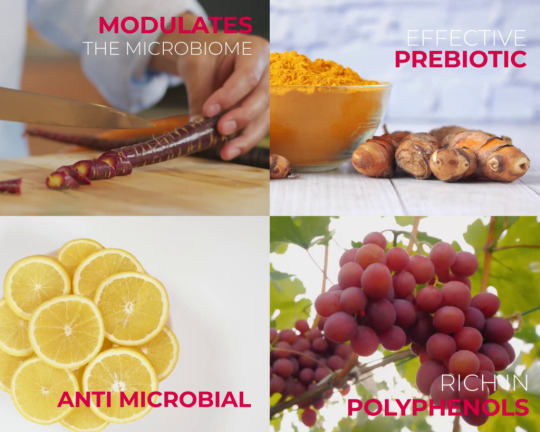
WHAT YOU’RE GETTING IN EVERY SERVING:
Exotic Superfruit Formula
Red-light Fermented Noni
Noni
Turmeric
Ferment Jackfruit
Amla
Ponkan
Antioxidant/Immune Complex
Noni
Blueberry
Jackfruit
Purple Carrot
Lemon
Amla
Red Grape
Ponkan
THIS IS WHAT YOU CAN EXPECT:
Next Balance was designed to promote a balanced, healthy gut microbiome, which will in turn support these healthy systems and functions: Immunity, mental acuity, skin structure, heart health & circulation, electrolyte & acidity balance, inflammation process, energy, aging process and more.
#Love Biome#microbiome#gut health#gut microbiome#gut microbiota#next detox#next balance#phytopower#Go Love life#Daily 3 system#probiotics
0 notes
Text
Three Keys to Love Biome Daily 3 System Consumption (GO Love Life)
Love Biome’s Daily 3 system is intended to function as a single item with three components. Phytopower, Next Balance, and Next Detox
It is a beautifully balanced, harmonious system that feeds and diversifies the microbes in your stomach.
We're discussing comprehensive microbiome care due to the Daily 3 System's strength. We frequently receive inquiries concerning proper consumption, such as when in the day to take these goods, whether they should be consumed with food or on an empty stomach, and even whether there is a proper sequence in which to take these items.
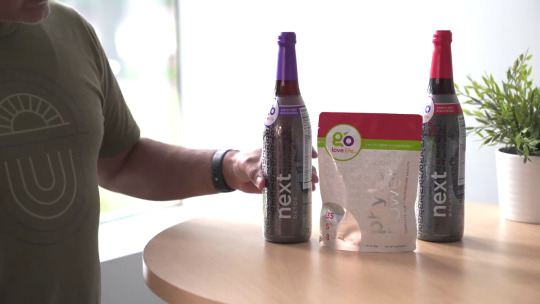
We adore the inquiries because they reveal genuine enthusiasm on the part of our clients. Three keys to consumption for the Love Biome Daily 3 system are what I want to share with you today.
The first consistency we've noticed is that, while it's excellent, our customers have diverse preferences for when, how, and even where they take our products.
But constancy in drinking is by far the most crucial aspect of following the daily 3 system. No matter what, drink Next Balance, Next Detox, and Phytopower every day. Don't stress about setting the ideal environment.
Creating a personal routine is the crucial second routine component of consistency. Others prefer to consume all three items at once when they awaken, which is wonderful.

Some prefer to consume one Next beverage in the morning and one in the evening with Phytopower sometime in the middle of the day. There is no one proper answer; instead, find a schedule that suits your needs and way of life.
Keep it simple, which is the third key The Daily 3 System exudes simplicity; it is easy to purchase, store, and utilize. Don't worry about it, and keep the band together. The specialized formulations of Phytopower, Next Balance, and Next Detox contain 96 different and complementary components. embrace simplicity and learn to enjoy the flavor of health.
The Daily 3 System is the ideal daily activity to change the trajectory of your health, change one thing, and change everything because that's how you GO love life, so perhaps those three keys will improve your experience with it.
#Love Biome#Next Detox#Next Balance#PhytoPower#GO Love Life#Microbiome#Gut Microbiome#Gut Microbiota#Gut Microbes#Gut Health
0 notes